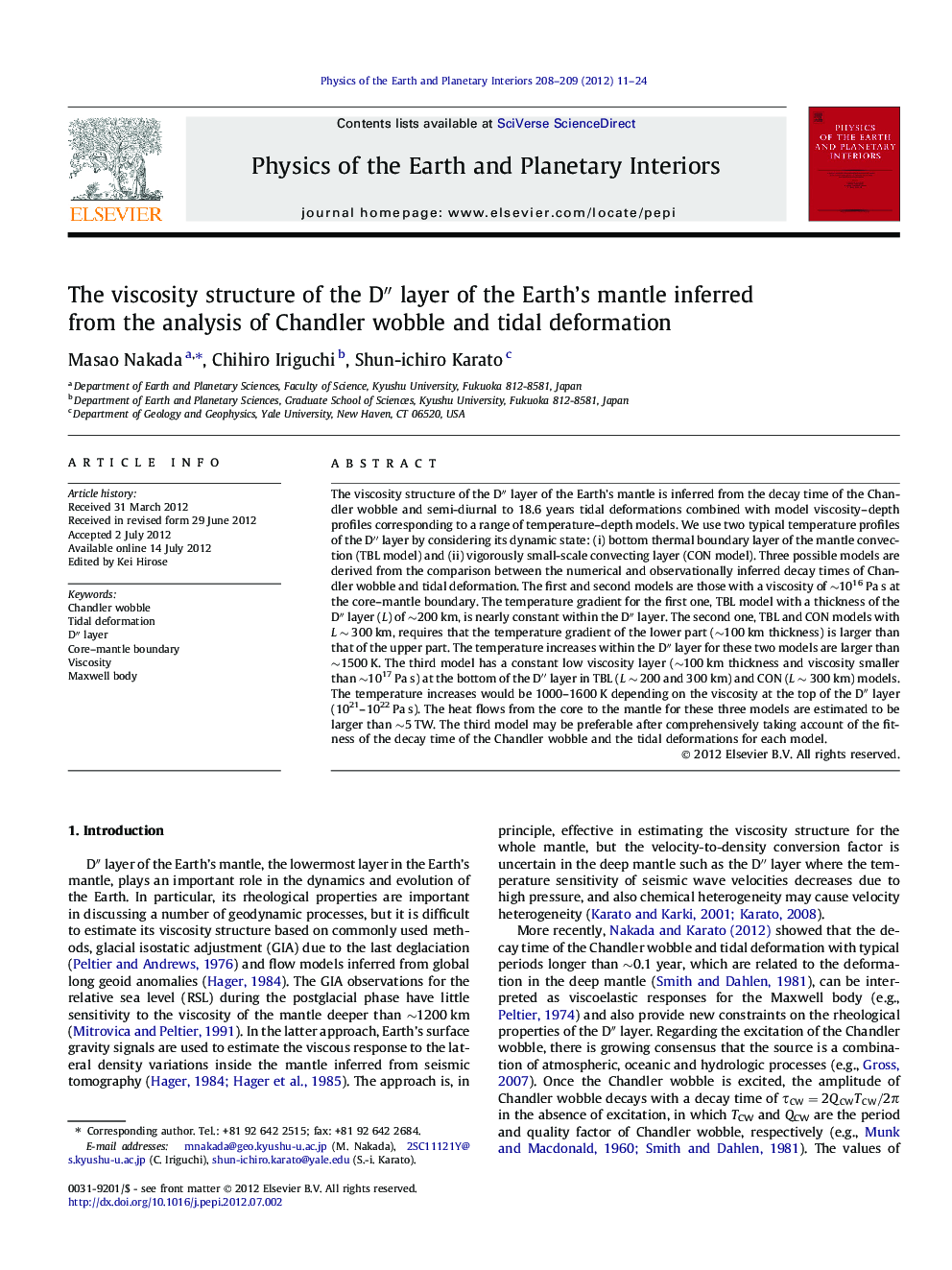| کد مقاله | کد نشریه | سال انتشار | مقاله انگلیسی | نسخه تمام متن |
|---|---|---|---|---|
| 4741653 | 1641530 | 2012 | 14 صفحه PDF | دانلود رایگان |

The viscosity structure of the D″ layer of the Earth’s mantle is inferred from the decay time of the Chandler wobble and semi-diurnal to 18.6 years tidal deformations combined with model viscosity–depth profiles corresponding to a range of temperature–depth models. We use two typical temperature profiles of the D″ layer by considering its dynamic state: (i) bottom thermal boundary layer of the mantle convection (TBL model) and (ii) vigorously small-scale convecting layer (CON model). Three possible models are derived from the comparison between the numerical and observationally inferred decay times of Chandler wobble and tidal deformation. The first and second models are those with a viscosity of ∼1016 Pa s at the core–mantle boundary. The temperature gradient for the first one, TBL model with a thickness of the D″ layer (L) of ∼200 km, is nearly constant within the D″ layer. The second one, TBL and CON models with L ∼ 300 km, requires that the temperature gradient of the lower part (∼100 km thickness) is larger than that of the upper part. The temperature increases within the D″ layer for these two models are larger than ∼1500 K. The third model has a constant low viscosity layer (∼100 km thickness and viscosity smaller than ∼1017 Pa s) at the bottom of the D″ layer in TBL (L ∼ 200 and 300 km) and CON (L ∼ 300 km) models. The temperature increases would be 1000–1600 K depending on the viscosity at the top of the D″ layer (1021–1022 Pa s). The heat flows from the core to the mantle for these three models are estimated to be larger than ∼5 TW. The third model may be preferable after comprehensively taking account of the fitness of the decay time of the Chandler wobble and the tidal deformations for each model.
► We examine the decay time of Chandler wobble and tidal deformations.
► We show that these provide a strong constraint on the temperature-dependent viscosity structure of the D″ layer.
► We found that the viscosity at the bottom of the D″ layer is 4–5 orders of magnitude smaller than the viscosity at the top.
► The inferred viscosity structure indicates that the temperature increase within the D″ layer would be 1000–1600 K.
Journal: Physics of the Earth and Planetary Interiors - Volumes 208–209, October 2012, Pages 11–24